In this article, we are going to learn French defense chess opening that is used to counter white’s 1.e4. This opening is a popular choice both at club level tournaments and grandmaster level tournaments. It usually leads to strategically complicated positions where you need to maneuver your pieces strategically to get good squares.
French defense chess opening initial moves
It starts with the move 1.e4 e6 2.d4 d5. French defense chess opening is played against white’s 1.e4 which is one of the best chess openings for white.

Black’s strategy is to counter white’s 1.e4 pawn so black plays 1…e6 to prepare 2…d5 to counter white’s centre. Black is building a light square wall in the centre.
White has various options to deal with French defense chess opening and let’s see how you can counter each one of white’s reply.
Classical main line 3.Nc3:
1.e4 e6 2.d4 d5 3.Nc3 is the classical main line and most popular way to deal with French defense chess opening.
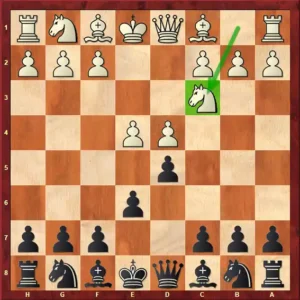
Black has three main ways to deal with it.
3...Bb4 variation
Black can play 3…Bb4. This is known as Winawer variation.
After 4.e5 c5 5.a3 Bxc3+ 6.bxc3 we have reached an unbalanced position.
White has the bishop pair but black has ruined white’s pawn structure. White’s strategy will be to use his dark squared bishop to exploit dark square weakness in black’s position and black’s strategy is to exploit white’s weakened pawn structure.
This variation of french opening chess leads to strategically complicated positions.
3...Nf6 variation
After 4.e5 Nd7 5.f4 c5 6.Nf3 Nc6 we have reached a typical French defense chess opening position where centre is closed and both sides will try to play on the flank.
White will try to play on the kingside and black will attack on the queenside which is a common way of playing in french opening chess.
Black’s piece placement is pretty simple: c8 bishop goes to b7 after …b7-b5 pawn move, f8 bishop goes to e7, black’s queen goes to b6 then black starts pushing the pawn on queenside and attack there.
3...dxe4 variation
After 4.Nxe4 Nd7 5.Nf3 Ngf6
We have reached a position which is simpler to play from the black side.
In this variation of french opening chess,Black’s plan is to develop f8 bishop to e7, play …b6 to put c8 bishop on b7, go short castling and break the centre with …c5.
If you are playing French defense chess opening for the first time then I suggest you play this variation against 3.Nc3 because this variation is relatively easy to play from black side.
Tarrasch variation 3.Nd2:
White’s idea of developing the knight to d2 instead of c3 is to avoid the 3…Bb4 pin and it second most popular way to deal with french defense chess opening.
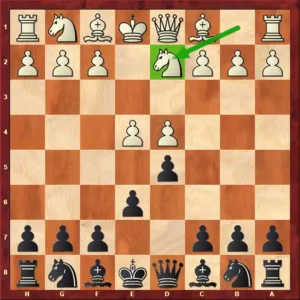
Against this variation, black has many options.
1) Black can play 3…c5 immediately to attack in white’s centre. It usually leads to isolated queen’s pawn position.
After the moves 4.exd5 exd5 5.Ngf3 Nc6 6.Bb5 we have reached a position where after the exchange of d4 and c5 pawn, black will be left with isolated queen’s pawn but black has good piece activity that compensates for the weakness of d-pawn. Black’s piece placement is also easy: g8 knight goes to f6 , f8 bishop goes to d6, c8 bishop goes to g4 and black goes short castling.
2) Black can play 3…Nf6 after 4.e5 Nd7 It leads to typical French defense chess opening position with closed centre. In this structure, black’s plan is to attack on white’s d4 pawn by playing moves like …c5, Nc6 and Qb6. White will try to play on kingside by playing moves like f4-f5 and black will try to attack on the queenside.
3) Black can also play 3…dxe4, this is my recommendation against 3.Nd2 after 4.Nxe4 Nd7 we have already covered this variation in 3.Nc3 mainline section.
If you play this variation, then it will save you a lot of time because you don’t have to prepare a separate line against 3.Nd2 variation.
Advanced variation (3.e5):
After 1.e4 e6 2.d4 d5 black can play 3.e5 leading to advanced variation of french defense chess opening.
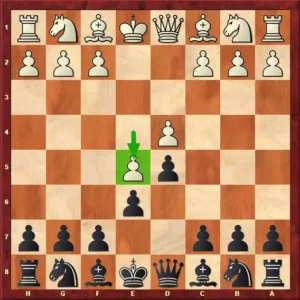
White’s idea is to take more space in the centre but this variation is not so dangerous for black. I will show you a very simple and straightforward plan to play against the advance variation.
Our strategy revolves around attacking the weak d4 pawn. We are going to develop our pieces in a way that will put a lot of pressure on d4 square.
Our piece placement: first we play …c5 to immediately put more pressure on d4, then develop b8 knight to c6, queen goes to b6, g8 knight goes to f5 via e7. With this piece placement, you are putting a lot of pressure on white’s d4 pawn.
Here is one concrete line: 1.e4 e6 2.d4 d5 3.e5 c5 4.c3 Nc6 5.Nf3 Qb6 6.Be2 Nge7 with knight coming to f5.
Exchange variation:
After 1.e4 e6 2.d4 d5 white can play 3.exd5 leading to exchanged variation of french defense chess opening.
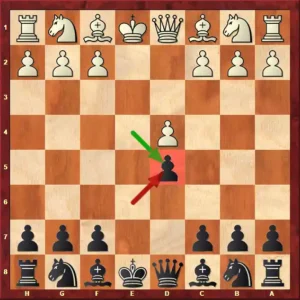
This variation has a dull reputation because pawn structure becomes symmetrical and most games at top level results in a draw. I will show you two ways to counter this variation.
First way is to develop your g8 knight to f6, f8 bishop to e7 and go short castle. This variation leads to simple position where not much is happening. If you are okay with draw as a result then you can play like this.
If you are in a must win situation and you want to play aggressively then you should choose the second way. Instead of developing kingside pieces and go short castling, you can develop your queenside pieces first, go long castling and launch the pawn storm attack on white’s king.
Here is one concrete line: 1.e4 e6 2.d4 d5 3.exd5 exd5 4.Nf3 Bd6 5.Bd3 Nc6 6.0-0 Bg4 7.c3 Qd7 8.Re1+ Nge7 9.Nbd2 0-0 with moves like f6,g5,h5 you can launch the pawn storm attack on white’s king.
Tricky 3.Bd3
After 1.e4 e6 2.d4 d5 white can play tricky 3.Bd3
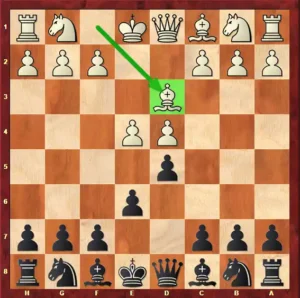
This move is not so popular but you should know how to counter this. White’s idea is to avoid the mainline theory and play a normal chess game.
Against his variation, I recommend 3…dxe4 which leads to positions similar to what we have covered in first and second variations.
Here black’s plan is also similar: g8 knight goes to f6, b8 knight goes to d7, f8 bishop goes to e7, king goes to short castling and then black strikes in the centre with …c5 move.
Here is one concrete line: 3.Bd3 dxe4 4.bxe4 Nf6 5.Bf3 Nbd7 6.Ne2 Bd6 7.0-0 0-0
Conclusion:
French defense chess opening is a good opening which is playable at all levels. If you are a beginner then I suggest you play 3…dxe4 variations against white’s main line theory to save lot of preparation time.

